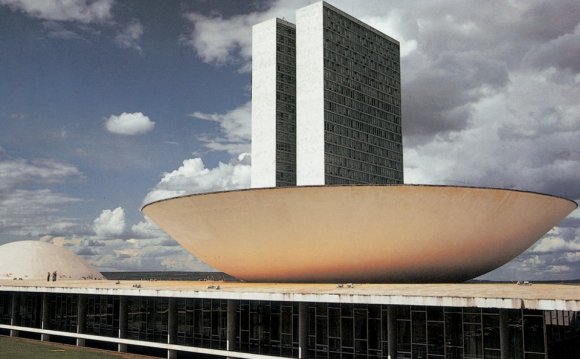
The groundbreaking Chicago school of architecture was founded by William Le Baron Jenney (1832-1907), along with a number of other innovative American architects. A centre of high-rise development rather than a school per se, it had no unified set of principles, and buildings created by the members of the school employed many different designs, construction techniques and materials. Some key characteristics of Chicago architecture during this period included: new foundation techniques pioneered by Dankmar Adler; metal skeleton frames - first used in Jenney's Home Insurance Building (1884); the use of steel and iron, first highlighted by the French architect Viollet-le-Duc, and used by Louis Sullivan and others.
Famous Chicago School Firms of Architects
William Holabird (1854-1923) and Martin Roche (1853-1927)
Buildings designed by Holabird & Roche included:
- Marquette Building, Chicago (1895)
- Gage Group Buildings at S. Michigan Avenue, Chicago (1899)
- Chicago Building (Chicago Savings Bank Building) (1904-5)
- Brooks Building, Chicago (1909-10)
Daniel Hudson Burnham (1846-1912) and John Wellborn Root (1850-91)
Buildings designed by Burnham & Root, or Burnham and Co, included:
- Fisher Building, Chicago (1895-6)
- Flatiron Building, New York (1901-3)
- Heyworth Building, Chicago (1904)
Dankmar Adler (1844-1900) and Louis Sullivan (1856-1924)
Buildings designed by firm Adler and Sullivan, included:
- Chicago Stock Exchange Building (1893-94)
- Prudential Building (Guaranty Building) Buffalo (1894)
Art Nouveau Architecture (1890-1920)
A decorative style of architecture characterized by flowing lines, and abstract floral motifs, which was closely associated with the Arts and Crafts movement championed by William Morris (1834-96). Known in Germany as Jugendstil - it was applied to both the exterior and interior design of buildings. Interiors were often lavishly decorated with various types of applied art - including stained glass and ceramics.
Famous Art Nouveau Architects
Antoni Gaudi (1852-1926)
Designer of the Casa Mila (La Pedrera) (1906-10) in Barcelona.
Victor Horta (1861-1947)
Designed Hotel Tassel (1892-3), and Maison du Peuple (1896-9) in Brussels.
Hector Guimard (1867-1942)
Famous for his entrances to the Paris Metro.
Joseph Maria Olbrich (1867-1908)
Founder of the Vienna Seccession, designer of its headquarters.
Charles Rennie Mackintosh (1868-1928)
Designer of the Glasgow School of Art (1907).
Giuseppe Brega (1877-1960)
Stile Liberty architect of Villa Ruggeri, Pesaro (1902).
Revivalist Architecture (1900-2000)
Ever since Italian Renaissance architects revived the proportions and orders of Roman architecture, designers have turned to the past for inspiration. Such revivalism reached its apogee in 19th century architecture, in numerous Romanesque (1000-1150), Gothic (1150-1300) and Beaux-Arts structures in Britain - see for instance Victorian architecture - Europe and the United States, but the process continued into the 20th century.
Famous 20th Century Revivalist Buildings
"Gothic" Sagrada Familia (1883-1926) by Antoni Guardi.
"Classical" AEG Turbine Factory, Berlin (1909) by Peter Behrens.
"Classical" Pennsylvania Railway Station (1910) by McKim, Meade & White.
"Classical" Lincoln Memorial, Washington DC (1922) by Henry Bacon.
"Medieval" Stockholm City Hall (1923) by Ragnar Ostberg.
"Romanesque" Stuttgart Train Station (1928) by Paul Bonatz.
"Ziggurat" 55 Broadway, London (1929) by Charles Holden.
"Classical"/"Mughal" Viceroy's Palace, India (1930) by Edwin Lutyens.
"Roman" Milan Train Station (1931) by Ulisse Stacchini.
"Classical" City University, Rome (1935) by Marcello Piacentini.
"Classical" German Pavilion, World Exhibition, Paris (1937) by Albert Speer.
"Greek"/"Moorish" San Simeon Hearst Castle (1939) by Julia Morgan.
"Egyptian" Louvre Pyramid (1998) by I.M.Pei.
Note: For biographies of 19th century architects associated with Revivalist architecture, see:
James Renwick (1818-95) - Neo-Gothic architect.
Henry Hobson Richardson (1838-86) - Neo-Romanesque designer.
New York School of Skyscraper Architecture (1900-30)
Steel-frame high-rise architecture was pioneered in the 19th century by American architects in New York and Chicago: two cities which were experiencing rapid development but whose available space was limited. With the fall in the price of steel - a major construction material for high-rise structures - building upwards suddenly became much more economically attractive. During the first three decades of the 20th century, New York took the lead with a number of cutting-edge skyscrapers.
Famous New York Skyscrapers
- Park Row Building NYC, (18991901) by Robert Henderson Robertson.
- Flat-iron Building NYC, (1902) by Daniel H. Burnham & Company.
- Philadelphia City Hall (1908) by John McArthur, Thomas U.Walter.
- Singer Building NYC, (1908) by Ernest Flagg.
- Metropolitan Tower NYC, (1909) by Napoleon Le Brun & Sons.
- Woolworth Building NYC, (1913) by Cass Gilbert.
- Empire State Building NYC, (1929) by Shreve, Lamb & Harmon.
- Daily News Building NYC, (1929) by Howells & Hood.
- Chanin Building NYC, (1929) by Sloan & Robertson.
- Lincoln Building NYC, (1930) by J.E. Carpenter & Associates.
- Bank of Manhattan Trust Building NYC, (1930) by Craig Severance.
- Chrysler Building NYC, (1931) by William Van Alen.
- Rockefeller Center NYC, (1940) by Hofmeister, Hood, Godley, Fouilhoux.
Early Modernist Architecture (1900-30)
"Modernist architecture", the first real example of 20th century architecture, was designed for "modern man". It was relatively, if not wholly, devoid of historical associations, and made full use of the latest building techniques and materials, including iron, steel, glass and concrete. Functionality was a key aspect of the modernist style. The format was later fully realized in the United States: see, for instance, Henry Ford's assembly plant at Rouge River, south of Detroit - then the largest manufacturing plant in the world.
Famous Early Modernist Architects
Frank Lloyd Wright (1867-1959)
Designed Robie House, Chicago (1910); Fallingwater, Bear Run, PA (1937).
Peter Behrens (1868-1940)
Built the AEG Turbine Factory, Berlin (1909).
Adolf Loos (1870-1933)
Designed Steiner House, Vienna (1910); Moller House, Vienna (1928).
Eliel Saarinen (1873-1950)
Designed Helsinki Train Station (1904-14).
Walter Gropius (1883-1969)
Designed Fagus Factory, Alfeld-an-der-Leine (1911).
Le Corbusier (1887-1965) (Charles-Edouard Jeanneret)
Designed Villa Savoye (1931); Unite d'Habitation, Marseille (1952).
Expressionist Architecture (1910-25)
This architectural style emerged in Germany and the Low Countries. Expressionist architects rebelled against the functionalist industrial-style structures of modernist architecture, preferring more sinuous or highly articulated forms. These included curves, spirals and non-symmetrical elements, as well as structures in which the expressive values of certain materials are emphasized. A contemporary example of expressionist architecture is the Sydney Opera House (1973), designed by Jorn Utzon (1918-2008).
Famous Expressionist Architects
Rudolf Steiner (1861-1925)
Famous for his Goetheanum, Dornach (1914).
RELATED VIDEO




 Architectural history is a discipline which records, studies and interprets architecture, its forms, purposes and evolution. Architecture has been observed and recorded since ancient times. In terms of the study of Western architecture study must begin in...
Architectural history is a discipline which records, studies and interprets architecture, its forms, purposes and evolution. Architecture has been observed and recorded since ancient times. In terms of the study of Western architecture study must begin in...








